A branded website acts as the core of a robust online presence, underscoring your company’s distinctiveness, differentiating it from competitors, and crucially, fostering trust. An overwhelming 81% of consumers consider trust crucial in their brand selection, underscoring its significance. This article guides you through mastering brand integration into your business website.
However, it’s important to clarify that this involves more than just displaying your logo or using your brand colours. It’s about expressing the unique character of your brand and forging an emotional bond with your site visitors.
What is Branding? Understanding its Depth and Influence
Before delving into the intricacies of your website, it’s essential to thoroughly grasp the concept of branding. Branding transcends the basics of logo design and selecting an apt brand name. It’s a multifaceted process that encapsulates the very soul of your company through a symphony of words, visuals, and actions. It’s about crafting an identity that resonates deeply with your audience.
A meticulously designed brand has the power to evoke emotions, forge trust, and set your business apart by championing values and causes that resonate with your audience. It’s not just a superficial layer; it’s the narrative that underpins your company’s existence.
Your branding is built upon foundational elements such as your company’s core values, its mission, the intended target audience, and the nuances of the competitive landscape. From this bedrock, a distinctive brand personality and identity emerge, finding expression in every facet of your visual and verbal communications. This holistic approach ensures that your brand’s essence is consistently conveyed, no matter the platform or medium.
Why Brand Integration into Your Website is Imperative
In the digital era, your website often serves as the first point of contact between your company and the public. As such, it should be a true reflection of your brand identity, embodying the essence of your brand in every pixel and word.
But branding your website is far more than an exercise in aesthetics. It’s about establishing a solid presence that fosters recognition and trust. A well-branded website doesn’t just attract visitors; it engages them, leaves a lasting positive impression, creates meaningful connections, and paves the way for conversions and referrals.
In today’s interconnected, multi-channel landscape, the importance of seamlessly integrating your branding into your website is paramount. With audiences encountering your brand across various platforms, often simultaneously, your website needs to echo the same story, values, and aesthetics to maintain consistency and reinforce your brand’s message.
Key Elements of Effective Website Branding
- Boosting Brand Recognition:
- Your branding serves as a unique signature, linking your website to other points of interaction like social media profiles.
- Consistency across these platforms reassures visitors of your brand’s authenticity and unity.
- Expressing Your Brand Identity:
- Your website should be a vibrant canvas where your brand’s personality, values, and beliefs are vividly depicted.
- This not only helps in attracting an audience that resonates with your ethos but also effectively filters out those who don’t align with your brand’s vision.
- Establishing Trust, Credibility, and Differentiation:
- A professionally branded website exudes competence and reliability, crucial in building trust with your audience.
- The consistent application of your brand assets, like logos and typography, enhances recognition, making your brand increasingly familiar and distinct.
- Fostering Emotional Connections:
- At its core, branding is about forging emotional bonds and relationships.
- Your website should be a reflection of the moods and emotions that your brand embodies, fostering deep and enduring connections with your audience.
- Cultivating these emotional ties increases the likelihood of transforming casual visitors into loyal customers and brand advocates.
How to Create a Consistently Branded Website
Crafting a successful website in the UK involves a blend of both visible elements like logos, brand colours, and typography, and the less tangible aspects such as brand storytelling and personality. Let’s delve deeper into how these components can be effectively integrated into your website for a cohesive brand experience.
Express Your Brand Personality
Your brand personality is essentially the character and identity of your brand. It significantly influences how your audience perceives and engages with your business. This could range from being humorous or serious to outdoorsy or luxurious. Every element of your website, from the visual design to the textual content, should mirror this personality, ensuring a unified and coherent appearance.
For instance, your Call to Action (CTA) texts should also embody this character. Rather than a standard “Sign Up,” opt for something more aligned with your brand’s tone, such as “Join the Adventure,” “Experience Luxury,” or “Explore More.” An excellent example of this in practice is the Oatly website, which effectively encapsulates the brand’s quirky and nonconformist personality.
Integrate Your Verbal Branding
Brand messaging is the vehicle through which you convey your core values, offerings, and unique selling propositions to your audience. It encompasses the language, tone, and style of your content.
To develop a coherent messaging strategy:
- Identify key messages that resonate with your brand’s mission and your audience’s needs.
- Highlight your offerings while underscoring your brand values.
- Utilise your blog to demonstrate your expertise and disseminate content that reflects your brand ethos. Establish “brand pillars” or content themes as a guide.
The tone of voice on your website, be it in product descriptions, blog posts, or the “About Us” section, should be consistent with your brand’s overall voice. This consistency should extend to the choice of words, sentence structure, key phrases, and even punctuation.
For instance, the Airbnb website adopts a welcoming and inclusive tone, fostering a sense of belonging to a global community.
Emphasising Your Tagline
A tagline can be a powerful tool for conveying your brand’s essence and personality succinctly. If your brand has a tagline, it should be prominently displayed on your website so that visitors can instantly grasp your core message. This tagline not only communicates what you do but also what sets you apart.
Consider incorporating your tagline into your website’s SEO title tags, ensuring that it appears in Google search results, further amplifying your brand message.
Infuse Your Visual Branding for Enhanced Impact
Visual branding is a critical aspect of your website’s design, playing a pivotal role in how visitors perceive and interact with your brand. Let’s delve into the key components and how to effectively utilise them.
Logo: The Centrepiece of Visual Identity
Your logo often captures the initial attention of visitors and is a direct representation of your brand. Placement is key:
- Top-Left Corner: Traditionally, logos are placed here, as it’s where eyes naturally gravitate on a webpage.
- Centre: Central placement suits websites with a centered navigation layout. Some modern designs even incorporate the logo across the entire hero section, although this might not be suitable for all as it can sacrifice valuable space.
- Ensure your logo is in a high-resolution format, like SVG, to maintain clarity across devices.
- Animated Logos: Consider animated logos for dynamic industries like motion graphics, adding an interactive element to your website.
Brand Colours: Creating a Visual Harmony
Your brand’s colour palette is essential in website design. Consistency is crucial:
- Primary Colours: Utilise these for prominent elements like headlines and buttons to draw attention.
- Secondary Colours: Ideal for backgrounds and text, providing a balanced visual flow.
- Avoid stark black or white; subtle colour shades can enhance brand recognition subtly yet effectively.
- Be mindful of colour proportions to avoid visual imbalance. For instance, Starbucks uses its signature green to evoke familiarity and its coffeehouse ambiance.
Brand Typography: Communicating with Style
The fonts you choose should align with your brand’s personality, impacting the overall perception:
- Font Selection: Choose fonts that reflect your brand’s ethos, be it modern, professional, or playful.
- Typographic Hierarchy: Use title tags (H1, H2, H3, etc.) correctly for a clean layout and improved SEO.
- Limit the number of typefaces to maintain a coherent and professional look, also aiding in faster website loading times.
- A classic example is The New York Times, which uses a readable serif font, aligning with its reputable image.
Consistent Imagery: Visual Storytelling
The images and graphics on your website should align with your brand’s overall aesthetic:
- Choose imagery styles (custom illustrations, photography, motion design) that reflect your brand’s character.
- Vibrant illustrations can convey a playful brand, while high-quality photographs may suit a more professional image.
- For example, Drink Haus uses warm, candid imagery, aligning with its unique brand persona.
Consistent Layout: The Framework of Your Site
Maintaining a consistent layout throughout your site is crucial for a seamless user experience:
- Stick to a uniform column structure and consistent placement of elements like headings.
- Utilise white space effectively to create a clean, uncluttered look.
- A well-thought-out layout not only aids in easy navigation but also reinforces your brand’s identity.
Create a Seamless User Experience: Enhancing Engagement and Accessibility
In addition to your brand elements, providing a seamless user experience is paramount. Here’s how to ensure your website is not only visually appealing but also functionally superior.
Navigation and Site Structure: Optimising for Ease and Efficiency
- User-Friendly Design: Your website’s structure should be intuitive, enabling visitors to effortlessly find what they’re looking for, whether it’s information, products, or services.
- Customer Journey Mapping: Consider your customers’ journey, designing a flow that intuitively guides them through your site to the desired destination.
- Interactive Features: Implement features like chatbots for personalised support, offering immediate assistance and enhancing user interaction.
- FAQ Integration: A well-organised FAQ section can provide quick answers to common questions, improving user experience while saving time and resources.
Responsive Design: Catering to a Mobile-First World
- Ensure your website’s design is responsive, meaning it adapts seamlessly to various devices, from desktops to smartphones. This adaptability is crucial not only for user convenience but also reflects positively on your brand’s modernity and accessibility.
Making Your Website a ‘Brand Hub’
- Integrated Links: Include links to relevant sites, news articles, and your social media profiles. This interconnectedness not only boosts your SEO but also positions your website as a comprehensive resource for everything related to your brand.
- Social Media Integration: Incorporate social media icons and feeds, encouraging visitors to engage with your brand across multiple platforms.
Regular Content Updates: Keeping Your Site Dynamic and Relevant
- Regularly update your website with fresh content to avoid the impression of a stagnant, neglected brand. This could include blog posts, news updates, or new product information.
- Keeping content current also plays a crucial role in SEO, driving more traffic to your site.
Conclusion: The Cumulative Effect of Strong Branding on Your Website
Strong branding is far more than just a unique logo or colour palette; it’s about crafting a comprehensive identity that captures your brand’s values, personality, and unique character. When seamlessly integrated into your website, it creates a consistent and engaging user experience. This not only fosters trust and recognition but also attracts a broader audience, converting them into loyal customers. A well-branded website bolsters credibility, enhances user engagement, and can significantly boost conversions. Ultimately, a powerful brand presence on your website can be transformative, steering your business towards a path of success and distinction.











